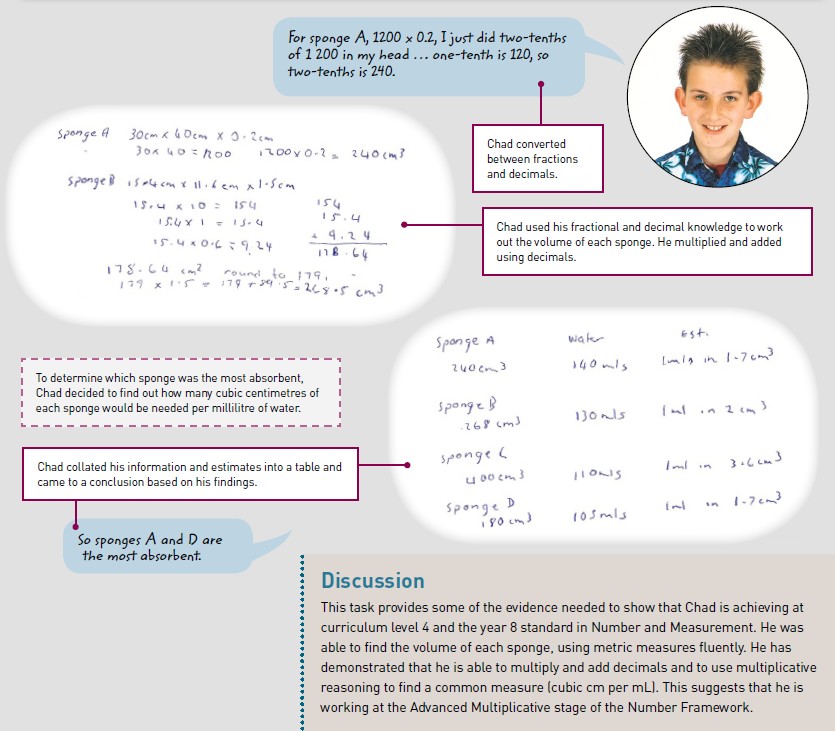
Soak It Up: Illustrating the year 8 standard
The following examples of student work illustrate achievement at the mathematics standard for year 8.The task in this illustration was part of a science investigation into the absorbency of sponges. The class was working on a unit called Fibres and Fabrics from Making Better Sense of the Material World. As part of the unit, the students identified material properties that contribute to absorbency and completed a lesson on fair testing. This task focuses on the mathematical problem solving that took place within the investigation. It relates to achievement objectives for Number and Measurement from the mathematics and statistics learning area in The New Zealand Curriculum.
The Task
Soak It Up
Your class is investigating which of four different types of sponge is the most absorbent. The four sample sponges vary in size.
- a. Find the volume of each sponge.
b. Record how much water each sponge absorbs. - Which sponge is the most absorbent?
Some features of students’ work used to make judgments in relation to the year 8 mathematics standard are described below.
There is also an illustration of the year 6 standard for this task.
There is also an illustration of the year 7 standard for this task.
| New Zealand Curriculum: Level 4 | National Standards: By the end of year 8 |
|
In solving problems and modelling situations, students will:
|
|
|
Number and Algebra
Geometry and Measurement
|
Number and Algebra
Geometry and Measurement
|
Hover over the image to zoom a section. Click on the image to enlarge it. Click again to close.
PDF of this task and Illustrations of the years 6, 7 and 8 standards (1.29MB)
